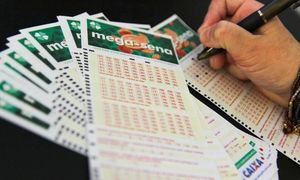The South African Department of Mineral Resources and Energy has announced significant increases to fuel prices, effective February 5, 2025, marking the fourth consecutive month of price hikes. Motorists are now facing increased costs at the pump, with petrol prices rising by 82 cents per litre for both 93 and 95 grades. The adjustments also mean diesel prices will climb between R1.01 and R1.05 per litre, depending on the specific grade.
This price adjustment came as global petrol prices surged and the South African rand weakened, contributing to rising costs for consumers. According to Robert Maake, spokesperson for the Department, illuminating paraffin will increase by 129 cents per litre, and liquefied petroleum gas (LPG) will see prices raised by 42 cents per kilogram.
Raymond Phillips, a Commodities Trader at RMB, noted the driving factors behind this trend include the steep rise in demand driven by cold weather across the Northern Hemisphere. He remarked on the anticipated rise of oil demand from China, influenced by recent economic stimulus measures instituted by the Chinese government.
Financial analyses reveal the average Brent Crude oil price has risen significantly from $72.78 to $77.41 per barrel over the past month. This rise is attributed to increased global demand paired with constraints on supply, partially due to recent OPEC+ decisions to defer production increases and new sanctions affecting exports from Russia and Iran.
Another concern is the continued deception of the rand against the US dollar, which has hit alarming lows. From R18.11 to R18.73 per dollar, the rand's depreciation, exacerbated by local political tensions over the Expropriation Bill, has caused concern among investors. This volatility emphasizes the extent to which external factors can impact domestic pricing. "The rand took a big hit," Phillips explained, "and this impacts everything, especially since oil is priced internationally."
The increase follows patterns established at the beginning of the year, making this the second consecutive adjustment to fuel prices. The first January hike followed similar trends, indicating an unsustainable upward spiral for the South African consumer. Already possessing the burden of rising living costs, many motorists are now urged to fill their tanks before the upcoming increases on February 5.
Despite calls for the government to intervene and ease financial strains on consumers, the slate levy, which can help cushion fuel price hikes, remains unchanged. The levy stands at zero cents per litre for both petrol and diesel, which means consumers have little relief from the regulatory framework currently set.
Looking forward, the Department has indicated potential for more adjustments come March 4, 2025, as international oil prices and the rand's performance continue to fluctuate. Observers anticipate these external conditions could produce even more pronounced effects on domestic fuel prices, hitting low-income households the hardest.
The consistent rise poses serious questions for the government and policymakers on how to cushion the broader economy from these rising costs. With transport is among the largest overheads for both individuals and businesses, inflationary pressures are expected to rise as fuel becomes increasingly expensive as part of everyday expenses.
For now, motorist concerns are palpable. Many dread the financial impact of the fuel price increases, closely followed by higher transportation costs, which may lead to hikes in goods and services across the board.
It remains to be seen how these adjustments will play out through local markets, and what measures will be proposed to alleviate some pressure on South African households facing these unyielding price increases. With international markets influencing the local economy so heavily, it's likely discussions on supportive measures will escalate as more adjustments loom on the horizon.



